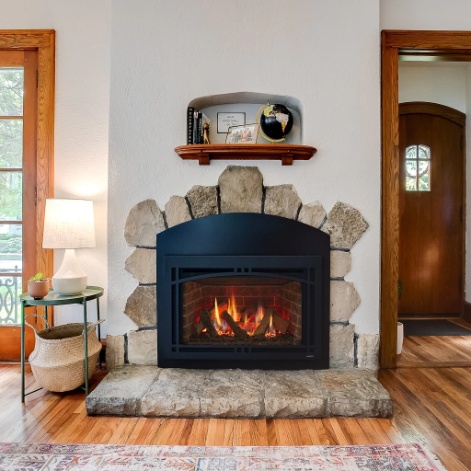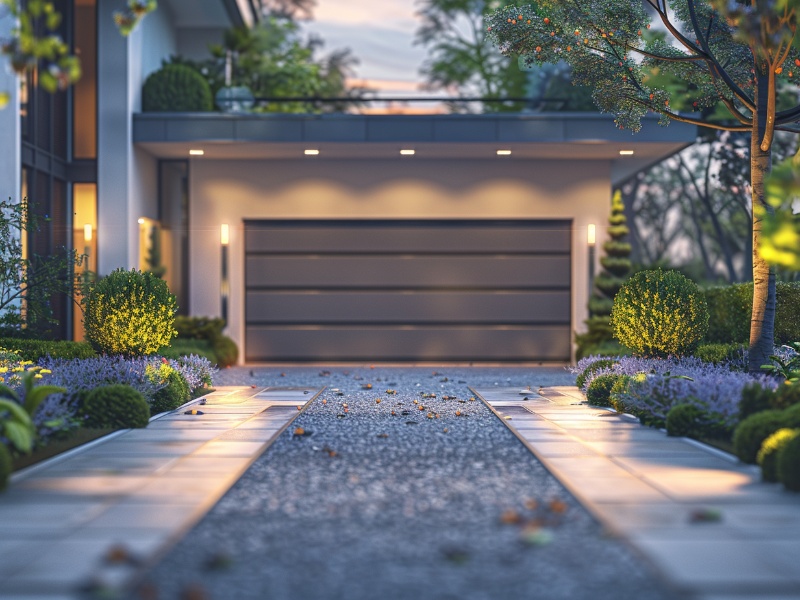Table of Contents
- 1 Key Takeaways:
- 2 What Are Brown Garage Doors?
- 3 What Materials Are Brown Garage Doors Made Of?
- 4 What Are the Benefits of Choosing Brown Garage Doors?
- 5 What Are the Different Shades of Brown for Garage Doors?
- 6 How to Incorporate Brown Garage Doors in Your Home’s Exterior Design?
- 7 Conclusion
- 8 Frequently Asked Questions
Are you thinking about upgrading your garage door to improve your home’s exterior look? Brown garage doors are a classic and stylish choice that fits well with many architectural designs. In this detailed guide, we’ll cover everything about brown garage doors, including the materials they’re made from, the various shades available, why brown is a good choice, and how to use them in your home’s design. We’ll also look at top brands for quality brown garage doors. Whether you like the warm feel of wood or the strength of steel, this article will give you useful information to help you decide what’s best for your home.
Key Takeaways:
- Brown garage doors add a touch of timeless elegance to any home’s exterior design.
- They are versatile in design, offering a range of shades and materials to suit any aesthetic.
- Incorporating brown garage doors can bring natural warmth and low maintenance to your home’s exterior.
What Are Brown Garage Doors?
Brown garage doors offer a distinctive and warm aesthetic to residential homes, complementing various architectural styles and adding character to the overall exterior design.
The rich, earthy tones of brown garage doors create a timeless appeal that seamlessly blends with traditional, modern, or rustic architectural designs. Their versatility allows them to effortlessly enhance the visual charm of a variety of residential properties. Whether adorning a craftsman-style home or a contemporary suburban abode, these garage doors make a striking statement.
The natural warmth of the color brown exudes a welcoming and cozy ambiance, making visitors feel immediately at ease as they approach the property. The classic yet stylish appearance of these garage doors lends a touch of sophistication and individuality to any home, elevating its overall curb appeal.
What Materials Are Brown Garage Doors Made Of?
Brown garage doors are made from different materials like steel, wood, and fiberglass. Each material has its own special features, strength, and design options that can enhance your home’s look.
Steel garage doors are popular for their durability, easy upkeep, and ability to resist dents and rust. Wood garage doors offer a natural warmth and can be customized with various finishes. Fiberglass garage doors are strong and look like real wood. These materials allow for a range of design choices to suit different architectural styles, from modern to traditional. They can be adjusted to match your house’s exterior, making them a flexible option for homeowners who want to make their home stand out.
Wood
Wooden doors have a natural, vintage charm. Their rich finish brings timeless elegance to your home’s exterior.
These doors are known for their impressive looks and unique warmth. They create a welcoming feeling that goes well with many architectural styles. Whether they have a smooth satin finish or a weathered look, they beautifully represent rustic beauty.
The natural grain and earthy brown tones of the wood make these garage doors feel authentic. They stand out as a striking feature of your home.
Steel
Brown steel garage doors are a modern and energy-efficient choice for homeowners. They use advanced technology and design to improve their look and function.
These doors have a sleek, modern look that enhances the appearance of any home. They are durable and easy to maintain. The strong steel makes these doors last long and provides great security for your property.
Steel garage doors are energy-efficient, which means they insulate well and help control temperature. This keeps your garage comfortable in different weather. Many of these doors have special insulation to prevent heat loss, saving you money on energy bills.
These modern doors also have advanced features like smart connectivity. This lets homeowners control the garage door with their smartphones, adding convenience and extra security.
Fiberglass
Brown fiberglass garage doors offer a modern choice with many color options and unique design features. This gives homeowners the chance to customize the door’s look to match their personal style.
These doors are made to look like traditional wooden doors, providing a warm and natural appearance while keeping the strong and easy-to-care-for qualities of fiberglass. The available rich brown shades are selected to go well with different house styles, from modern to rustic, adding elegance to any home’s exterior.
Adding creative design features like embossed panels, decorative hardware, and sleek window inserts makes these garage doors more attractive. They become a noticeable and beautiful part of the home’s front.
What Are the Benefits of Choosing Brown Garage Doors?
Choosing brown garage doors brings several benefits, like timeless beauty, many design choices, and improving the look and feel of your home.
A major plus of brown garage doors is their classic elegance. Their warm, rich colors go well with many house styles, adding sophistication to your home’s appearance.
These doors are also versatile in design. Homeowners can personalize them to fit their tastes and lifestyle. With a wide range of shades and finishes, you can find a brown garage door that perfectly matches your home’s style.
The warm and natural look of brown garage doors makes homes more welcoming and cozy. This choice adds a sense of harmony and elegance, enhancing the overall feel of your property.
Timeless Elegance
The timeless elegance of brown garage doors transcends traditional and vintage styles, offering a sophisticated and enduring charm to the overall exterior presentation of homes.
With their rich and warm tones, brown garage doors effortlessly complement various architectural designs, from colonial and craftsman to farmhouse and mid-century modern. Their classic appeal adds a touch of character and warmth to any home, creating a welcoming and inviting atmosphere. Whether paired with natural stone, wood siding, or stucco exteriors, brown garage doors exude a sense of refined beauty that stands the test of time.
Versatility in Design
Brown garage doors are very versatile in design, offering homeowners many color choices and ways to customize them to fit their home’s style and architecture.
These doors can match any home style, be it traditional, modern, or rustic. They come in a wide range of colors, from deep chocolate to warm caramel, allowing them to blend well with your home’s exterior walls, trim, and landscaping.
The flexibility in design is also notable. Brown garage doors come in different panel styles, window types, and decorative hardware. This variety means the garage door can not only improve your home’s curb appeal but also match your personal taste and the architectural style of your region.
Natural Warmth
Brown garage doors give off a natural warmth, making homes look inviting and comfortable. They use different materials to create this welcoming effect.
Wooden brown garage doors, made from strong and eco-friendly timber, add a natural charm and classic elegance to a home’s front. The wood’s rich colors and patterns make a friendly visual impression that blends with the home’s surroundings.
On the other hand, composite materials that look like wood offer the same beauty but are more resistant to the elements. These composite brown garage doors are easy to take care of and still provide the warmth and look of traditional wooden doors.
Low Maintenance
Brown garage doors are low maintenance, making them a practical and efficient choice for homeowners who want to enhance their home’s exterior without much effort.
Their neutral color means brown garage doors are versatile, matching well with different architectural styles and exterior colors. They are durable and resist rust and corrosion, making them a lasting choice for homeowners.
To maintain brown garage doors, you only need to clean them occasionally with mild soap and water. This easy care keeps the doors looking good and working smoothly.
Choosing brown garage doors offers homeowners a great mix of good looks and ease of care. They are an appealing option for those who want an easy-to-maintain upgrade for their home’s exterior.
What Are the Different Shades of Brown for Garage Doors?
Garage doors in brown hues are available in different shades, including dark brown, light brown, and reddish brown, each offering unique visual appeal and compatibility with various home exteriors.
The dark brown garage doors exude a sense of sophistication and modernity, making them a perfect match for contemporary and minimalist architectural styles.
On the other hand, light brown garage doors impart a warm and inviting feel, ideal for traditional and rustic-style homes.
Meanwhile, reddish brown garage doors add a touch of elegance and charm, complementing both Mediterranean and colonial architectural designs.
Dark Brown
Dark brown garage doors exude a rich and sophisticated allure, enhancing the overall exterior design of homes with their deep and captivating hue.
The deep, dark brown color of these garage doors effortlessly complements a range of architectural styles, from traditional to modern, adding a touch of elegance to any home exterior. The warmth and depth of the hue create a visually appealing and welcoming atmosphere, making a distinctive statement that sets the home apart from others in the neighborhood.
Light Brown
Light brown garage doors offer a warm and inviting presence, complementing the residential aesthetic with their gentle and welcoming hue.
These doors effortlessly blend into the natural surroundings, adding a touch of warmth and character to any home exterior. The light brown tones create a sense of coziness and evoke a feeling of comfort, making them a popular choice for homeowners looking to enhance their property’s curb appeal. The earthy tones of these garage doors can seamlessly connect with various architectural styles, from traditional to modern, making them a versatile and timeless option for any home.
Reddish Brown
Reddish brown garage doors evoke a rustic and earthy charm, adding a distinctive touch to the exterior presentation of homes with their warm and welcoming tones.
The rich, earthy hue of reddish brown garage doors infuses a sense of warmth and character into the facade of a home, carrying an inviting allure that complements the natural surroundings.
The nuanced variation in the reddish brown color palette creates a captivating visual appeal, harmonizing with the weathered textures and organic elements often found in rustic exteriors. Whether set against a backdrop of rugged stone or amidst the tranquility of a wooded landscape, these doors exude a timeless and charming aesthetic.
How to Incorporate Brown Garage Doors in Your Home’s Exterior Design?
Adding brown garage doors to your home’s exterior design means carefully picking colors that go well together, using well-thought-out accents, and choosing the right door style for a pleasing and unified look.
When putting in brown garage doors, think about your home’s current outside colors. Earthy tones like beige, taupe, and olive green work well with the warm colors of brown doors and create a unified appearance. You can make the look even better by adding accents, such as wrought iron hardware or decorative windows. Choosing the right door style is very important because it greatly affects how it looks. Make sure the door style, whether it’s traditional, modern, or carriage-style, fits well with your home’s architecture.
Complementing Color Scheme
To match brown garage doors well with your home, choose a color scheme that complements the door and fits the house’s overall design and architecture.
Picking the right colors is very important for how good the outside of your home looks. When you choose colors that go well with brown garage doors, think about the current colors, materials, and style of your house.
Brown doors look great with warm earthy colors like beige, taupe, or olive green. These colors create a friendly and unified atmosphere. Small contrasting details, like trim or accents, can make the overall look more interesting and appealing.
Adding Accents
Thoughtful accents on brown garage doors improves the exterior design of your home. These accents make the design more attractive and create a unified, visually pleasing look.
Accents are important for giving depth and personality to your home’s exterior. The right accents can match the architectural style and go well with things like landscaping and the color of the house. If you choose your accents carefully, your brown garage doors can stand out. They can draw attention to their attractive details and boost your home’s overall appeal.
Choosing the Right Style
Choosing the right brown garage door style is key for matching your home’s architecture and improving the look of its exterior. It’s important for the door to blend well with the design elements of your home.
The choice of a brown garage door, whether a traditional carriage style or a modern design, greatly affects how your property looks from the outside. Brown’s warm shades work well with many architectural styles, from colonial to craftsman and more.
The door’s texture, material, and panel design are also important. They help the garage door fit perfectly with your home’s exterior, making it look better.
Conclusion
In conclusion, this article provides an extensive guide on the benefits and versatility of brown garage doors for enhancing the exterior of your home. It covers the range of materials available, the various shades of brown that can be chosen to match your home’s aesthetic, and the maintenance aspects. Additionally, it delves into the energy efficiency and potential value increase that brown garage doors can offer. Whether you’re drawn to the warmth of wood or the resilience of steel, this guide offers valuable insights to help you make an informed decision in upgrading your home’s exterior with the timeless elegance of brown garage doors.
Frequently Asked Questions
1. What are the benefits of choosing brown garage doors for a timeless beauty?
Brown garage doors give your home warmth and elegance for a timeless, classic look. They match many architectural styles and colors, making them flexible for any home.
2. What materials are available for brown garage doors?
You can find brown garage doors in wood, steel, aluminum, and fiberglass. Each material offers unique benefits and enhances your home’s look.
3. Do brown garage doors require more maintenance compared to other colors?
No, garage door color doesn’t change the needed maintenance. But it’s key to clean and maintain any garage door to keep it working well and lasting long.
4. Can I customize the shade of brown for my garage doors?
Yes, you can choose from many brown shades and finishes. This helps you find the perfect match for your home and style. Contact your local garage door experts at Dreifuss Fireplaces (& Doors) today!
5. Are brown garage doors energy-efficient?
Yes, brown garage doors can save energy, depending on their material and insulation. For instance, insulated steel doors can cut energy costs by keeping your garage and home warm.
6. Do brown garage doors increase the value of my home?
Yes, quality, well-kept garage doors can raise your home’s value. Brown garage doors especially add elegance and appeal, attracting buyers.
Latest Articles

What Is An NG (Natural Gas) Indicator And Why You Need It For Your Fireplace
Table of Contents1 Understanding Natural Gas Fireplaces2 What is an NG Indicator?3 Importance of NG Indicators for Safety4 Types of NG Indicators5 Installation and Maintenance of NG Indicators6 Signs of a Faulty NG Indicator7 Frequently Asked Questions Natural gas fireplaces are a favored option among numerous homeowners due to their convenience and effectiveness. But, what is an NG (Natural Gas) indicator and why you need it for your fireplace? It is imperative to comprehend how they function and the significance of having an NG (Natural Gas) indicator for safety purposes. This article delves into the definition and significance of NG indicators. We will discuss the potential hazards associated with the absence of one and the various types of indicators accessible. Also, we will discuss installation and maintenance recommendations, and methods to recognize and rectify issues with malfunctioning indicators. Stay well-informed and ensure the safety of your home by referring to this exhaustive guide. Understanding Natural Gas Fireplaces Natural gas fireplaces serve as an efficient and convenient heating option for numerous households. They utilize natural gas as a fuel source to deliver consistent warmth and ambiance. How They Work and Why They Need NG Indicators The operation of natural gas fireplaces involves igniting natural gas to generate heat. This process requires diligent monitoring to ensure both safety and efficiency, a task facilitated by the use of NG indicators. NG indicators play a critical role in detecting potential gas leaks. They enable residents to promptly address and mitigate any associated hazards. Through continuous monitoring of gas levels and providing timely warnings and alerts, NG indicators uphold a secure indoor environment. It is imperative to ensure that these indicators function properly to facilitate the effective operation of natural gas fireplaces. This helps mitigate the inherent risks linked to gas leaks. What is an NG Indicator? An NG indicator is a specialized device equipped with advanced sensors and technology. It is specifically designed to detect natural gas leaks and monitor gas pressure in appliances, such as fireplaces. Definition and Purpose The NG indicator functions as a detector that monitors gas appliances for potential leaks. It provides essential functionality to ensure safety in households utilizing natural gas. These detectors play a crucial role in protecting residences by notifying occupants of dangerous gas leaks long before they escalate into perilous situations. Through continuous monitoring of gas levels in the vicinity, NG indicators offer an additional layer of protection. This is particularly important in properties that rely on gas-operated fireplaces or stoves. These devices not only help avert potential disasters but also enhance the overall peace of mind of homeowners. They assure them that their living spaces are equipped with reliable safety features. Importance of NG Indicators for Safety Natural gas indicators are essential for maintaining safety in households equipped with natural gas appliances. These devices serve as a proactive measure to promptly detect gas leaks. This offers homeowners a sense of security and assurance. Potential Dangers of Not Having an NG Indicator The absence of an NG indicator in residences equipped with natural gas appliances can pose significant hazards. This includes the risk of undetected gas leaks , carbon monoxide poisoning , and pilot outages that may lead to dangerous situations. These potential risks can profoundly impact indoor air quality. They directly influence the health and safety of individuals residing in the household. Undetected gas leaks can go unnoticed, gradually permeating the air and creating a potentially explosive environment. Insufficient ventilation from undetected exposure to carbon monoxide can lead to serious health complications. These range from mild symptoms such as dizziness to fatal poisoning. Without proper monitoring from an NG indicator, families are left susceptible to these concealed threats. This underscores the critical importance of implementing proactive measures to mitigate such risks. Types of NG Indicators Indicators for Natural Gas (NG) are available in diverse types. Each presents distinct detection capabilities tailored to specific requirements, encompassing both manual and automated alternatives. Manual vs. Automatic Indicators Manual NG indicators require user intervention for monitoring gas levels and identifying leaks. On the other hand, automatic indicators employ sophisticated technology to deliver continuous, real-time monitoring. This heightened efficiency and oversight enhance safety protocols. Conventional manual indicators rely on individuals to physically inspect and evaluate gas levels periodically. This renders them more susceptible to human errors. Conversely, automatic indicators feature sensors capable of promptly detecting even the most minute fluctuations in gas levels. This establishes a more dependable and precise monitoring mechanism. Automatic indicators can activate alerts and shut-off systems upon detecting a leak. This ensures immediate action to avert potential hazards. This advanced technology enhances safety protocols and instills a sense of command and assurance among users. Installation and Maintenance of NG Indicators The reliable and accurate performance of NG indicators necessitates proper installation and consistent maintenance. This often entails professional installation and adherence to recommended service guidelines. Proper Installation and Regular Maintenance Tips The proper installation of NG indicators involves adhering to the specifications in the user manual. Maintenance protocols entail strict adherence to a predetermined maintenance schedule to ensure sustained operational efficiency. During the installation phase, it is imperative to verify that the NG indicators are securely affixed in the designated location as stipulated by the manufacturer. Crucial steps include confirming power source compatibility and ensuring proper grounding of the device to optimize performance. Calibration of the indicator must be executed meticulously to ensure precise readings. Regarding maintenance, essential practices include regular inspection for signs of wear, thorough cleaning of the indicator components, and routine functionality tests. By allocating time to a consistent maintenance regimen, the NG indicator can operate with optimal efficiency over an extended duration. Signs of a Faulty NG Indicator Recognizing indicators of a malfunctioning NG indicator is essential for upholding safety and performance standards. Inaccuracies and detection issues can undermine the efficacy of these devices. Identifying and Addressing Issues The process of identifying and addressing issues related to NG (natural gas) indicators requires a systematic troubleshooting approach. This ensures their optimal performance

What You Need To Know About Gas Log Set Safety And Installation Considerations
Table of Contents1 Understanding Gas Log Sets2 Safety Considerations for Gas Log Sets3 Installation Guidelines for Gas Log Sets4 Maintaining and Troubleshooting Gas Log Sets5 Frequently Asked Questions Gas log sets are a favored option among homeowners seeking to enjoy the comfort and atmosphere of a conventional fireplace without the inconvenience of wood. This article tells you what you need to know about gas log set safety and installation considerations. Before incorporating one into your residence, it is imperative to understand the safety considerations associated with their use. This discussion delves into the potential hazards linked with gas log sets. It presents crucial precautions to uphold the safety of your home. Also, it outlines proper installation procedures and offers insight into common errors to avoid. Finally, it provides advice on maintenance and troubleshooting. Gain comprehensive knowledge on gas log set safety and installation considerations. Understanding Gas Log Sets Comprehending gas log sets is essential for individuals seeking to elevate their fireplace experience, and for gas lag set safety and installation. These heating appliances can operate on either natural gas or propane. In addition, they are available in a range of styles, including vented, ventless, and vent-free options. They provide an array of benefits and customization opportunities through various fireplace accessories. What are Gas Log Sets? Gas log sets are meticulously crafted artificial logs. They are designed to imitate the appearance and functionality of authentic wood logs within fireplaces. These gas log sets typically consist of ceramic or refractory concrete logs that have been skillfully molded and painted. This allows them to replicate the natural grain and texture of real wood. The logs are arranged in various configurations within the fireplace. They establish a realistic and welcoming ambiance. In addition to the logs, gas log sets often include fireplace accessories such as glowing embers. Accessories also include decorative stones, and even pine cones to enhance the overall aesthetic appeal. Homeowners can select from an array of placement options. These include traditional wood stack, cascading driftwood, or a contemporary geometric arrangement. Homeowners can align their preferred style and design preferences. Safety Considerations for Gas Log Sets Safety considerations for gas log sets are of utmost importance to guarantee a secure and pleasant fireplace experience. It is essential to address potential hazards such as carbon monoxide exposure, gas leaks, and fire safety to maintain a safe environment for homeowners. Potential Hazards and Precautions Gas log sets come with potential hazards that must be taken seriously, including the risks of gas leaks, carbon monoxide poisoning, and fire incidents. It is imperative to establish and adhere to rigorous safety measures to ensure the well-being of individuals and properties involved in the use of gas log sets. Gas leaks represent a significant hazard when utilizing gas log sets. They can result in the accumulation of combustible gas within the premises, heightening the possibility of explosions or fires. Carbon monoxide, an insidious gas generated during incomplete combustion, poses a grave threat due to its colorless and odorless nature, making it undetectable without proper monitoring. To address these risks effectively, it is vital to install carbon monoxide detectors and gas leak sensors in the vicinity of the gas logs. Routine maintenance checks on the gas log system, including cleaning and inspection procedures, are critical to ensure safe operations and the prompt identification of potential issues. In case of a gas leak or suspected presence of carbon monoxide, immediate evacuation of the affected area is paramount, followed by prompt contact with emergency services. Recognizing the distinct odor of rotten eggs associated with natural gas can serve as an early warning sign, prompting swift actions to avert any potential accidents. Installation Guidelines for Gas Log Sets The installation of a gas log set necessitates meticulous planning and strict adherence to specific guidelines. This includes verifying a secure gas connection, ensuring proper gas lines are in place, and complying with local building codes. Often, the complexity of these requirements may require the expertise of a certified technician. Proper Installation Techniques The appropriate installation procedures for gas log sets involve the secure connection of gas lines, meticulous adherence to installation manuals, and strict compliance with local building codes. It is imperative to prioritize the guarantee of secure gas connections to avert leaks and potential safety hazards. During the installation of gas log sets, utilizing suitable sealants and fittings is essential to establish a tightly sealed connection. The correct installation of gas lines is critical for both the safety and operational efficacy of the gas log set. Reference to the installation manual is highly advisable for detailed, step-by-step guidance to prevent inaccuracies and ensure the successful establishment of the gas log set. Consistently adhering to building codes and regulations upholds safety standards. Seeking guidance and confirmation from a certified technician before and after installation can offer invaluable support and assurance throughout the process. Common Installation Mistakes to Avoid It is imperative to avoid common installation errors to ensure the secure and effective operation of gas log sets. This includes verifying proper gas connections and compliance with building codes. Improper gas connections can result in leaks and potential hazards, underscoring the importance of verifying the tightness and correct alignment of all fittings. Failure to adhere to building codes can lead to structural complications, penalties for non-compliance, or even safety concerns. To prevent these oversights, it is advised to consult the manufacturer’s installation guidelines and strictly adhere to local regulations. Engaging a certified technician for the installation of gas log sets guarantees that the procedure is carried out accurately and securely. This provides assurance that the system is functioning as intended. Maintaining and Troubleshooting Gas Log Sets Regular maintenance and troubleshooting of gas log sets are imperative to uphold their optimal performance and safety. This includes thorough examination of the pilot light, pilot assembly, and other gas appliances to preserve heating efficiency and promptly resolve any arising issues. Tips for Maintenance and Repair Ensuring the proper maintenance of your gas log set necessitates conducting

Key Considerations For Using Compressed Liquid Propane In Fireplace Installation
Table of Contents1 What is Compressed Liquid Propane?2 Benefits of Using Compressed Liquid Propane in Fireplaces3 Safety Precautions for Installing Compressed Liquid Propane Fireplaces4 Installation Process for Compressed Liquid Propane Fireplaces5 Maintenance and Care for Compressed Liquid Propane Fireplaces6 Alternative Fuel Options for Fireplaces7 Frequently Asked Questions If you are contemplating the use of compressed liquid propane in your fireplace installation, this discussion will delve into the advantages of adopting this alternative fuel option. These benefits include enhanced efficiency, cost savings, and important safety precautions to consider. Furthermore, a detailed step-by-step guide on the installation process will be provided, along with recommendations for maintenance and care. A comparison of various fuel options for fireplaces will also be conducted to assist you in making an informed decision. We encourage you to stay engaged to gain insights into optimizing your fireplace’s capabilities with compressed liquid propane. What is Compressed Liquid Propane? Compressed Liquid Propane is a versatile energy source contained in a high-pressure propane tank. It finds extensive utility in both residential and commercial settings, prominently including fireplaces. Recognized for its convenience and efficiency, Compressed Liquid Propane emerges as a favored option for heating residential spaces and facilitating culinary pursuits across various environments. Additionally, it serves as a viable fuel substitute in vehicular contexts, portable cooktops, and outdoor grilling scenarios due to its propensity for clean combustion. The attribute of portability, coupled with ease of storage, positions Compressed Liquid Propane as an optimal energy source for individuals residing off the conventional grid. It is also great for engaging in outdoor activities such as camping and recreational vehicle (RV) travel. Moreover, the high energy density inherent to Compressed Liquid Propane renders it a dependable choice for sustaining generators during instances of power disruptions. Benefits of Using Compressed Liquid Propane in Fireplaces Utilizing Compressed Liquid Propane for fireplace installation presents several benefits. These include enhanced fuel efficiency, convenience, cost-effectiveness, and a favorable environmental footprint. These attributes render it a recommended option for heating solutions, applicable to both on-grid and off-grid settings. Efficiency and Cost Savings The utilization of Compressed Liquid Propane in fireplaces offers significant advantages, notably in terms of high fuel efficiency and cost-effectiveness. These attributes are underscored by the exceptional BTU rating and overall heating efficiency of Compressed Liquid Propane. The elevated fuel efficiency exhibited by Compressed Liquid Propane fireplaces necessitates less fuel to generate the same level of heat compared to traditional wood-burning fireplaces or electric heating systems. Consequently, homeowners can realize cost savings on their heating expenditures over an extended period. Moreover, the clean-burning characteristics of propane minimize maintenance costs linked to soot and ash cleanup. This further enhances the cost-effectiveness of employing propane fireplaces. Safety Precautions for Installing Compressed Liquid Propane Fireplaces Ensuring safety is of utmost importance during the installation of Compressed Liquid Propane fireplaces. This requires strict adherence to safety regulations, meticulous attention to proper ventilation requirements, careful control of ignition sources, and the incorporation of carbon monoxide and gas leak detection systems. Important Safety Measures Essential safety protocols for the installation of Compressed Liquid Propane fireplaces encompass adherence to fire safety regulations. Engaging in professional assessments and employing sophisticated gas leak and carbon monoxide detection mechanisms is crucial. Professional evaluations play a critical role in identifying any prospective hazards or irregularities within the fireplace infrastructure. These assessments are vital in ensuring the operational integrity of all components and compliance with safety protocols. Routine inspections serve to forestall potential fire incidents, gas discharges, or carbon monoxide emissions that could pose significant threats to both the property and individuals in the vicinity. The utilization of advanced gas leak and carbon monoxide detection systems serves as an additional safeguard by promptly notifying occupants of any elevated levels of these hazardous gases. Installation Process for Compressed Liquid Propane Fireplaces The installation procedure for Compressed Liquid Propane fireplaces encompasses several critical steps. These include: Adhering to installation guidelines Correctly positioning the propane tank Ensuring precise gas line installation Optimizing heat output Monitoring pressure regulation Establishing the pilot light Step-by-Step Guide The installation process of Compressed Liquid Propane fireplaces involves a systematic approach. This begins with the construction of the firebox, followed by the installation of the gas control valve, setup of the ignition system, design of the flue, and verification of a suitable combustion air supply. The construction of the firebox assumes critical importance as it serves as the foundation of the fireplace structure. It securely holds the combustible materials in place. Subsequently, the gas control valve plays a key role in managing the propane flow, guaranteeing safe and efficient operation. The installation of the ignition system facilitates convenient and reliable fire initiation. Designing the flue is a necessary step to direct exhaust gases outside, thus preventing their accumulation indoors. Moreover, ensuring a proper combustion air supply is essential to sustain optimal burning conditions and enhance fuel consumption efficiency. Each component contributes significantly to the functionality and safety of the fireplace installation process. This underscores the importance of meticulous attention to detail and adherence to established protocols. Maintenance and Care for Compressed Liquid Propane Fireplaces Consistent maintenance and attention to Compressed Liquid Propane fireplaces are imperative to guarantee their optimal functionality. This includes adherence to prescribed maintenance protocols, regular chimney upkeep, prevention of soot accumulation, and scheduling of routine propane deliveries and professional inspections. Tips for Keeping Your Fireplace in Good Condition For the maintenance of your Compressed Liquid Propane fireplace, it is essential to conduct regular checks on ignition sources. Monitor flame appearance, clean the gas burner and pilot assembly, and verify the correct operation of the safety shut-off valve. The inspection of ignition sources requires a detailed examination of the electronic igniter. This helps identify any signs of damage or corrosion and ensures proper sparking upon activation. Monitoring flame appearance involves observing a consistent blue flame with minimal flickering, which signifies efficient combustion. Cleaning the gas burner and pilot assembly can be performed using a soft brush or compressed air to eliminate any dirt or debris that may
